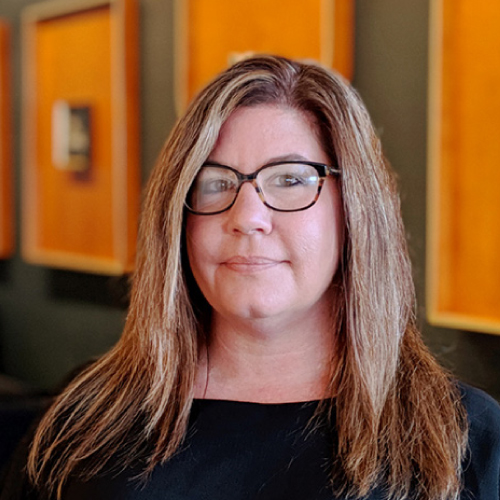Impact Report 2023: Grit
Mosaic perseveres through times of uncertainty, making bold decisions and nimble responding to change.

The Grit to Make Things Happen
One big accomplishment for Fiscal Year 2023 was Mosaic successfully achieving every strategic objective set for the year. All of Mosaic’s annual objectives are guided by its five-year strategic roadmap, Real life. Real possibilities. There were objectives built around personalized services, the workforce and fundraising, as well as one around Mosaic’s tech and data strategy, which impacted the daily work of every Mosaic employee.
“Because we respond to God’s call to love and serve others, from the outside, Mosaic looks like a social service organization,” said Linda Timmons, Mosaic President and CEO. “But in truth, we are a healthcare organization, and we’re obligated by all of the regulations and compliance expectations of a healthcare organization.”
To meet those expectations, Mosaic uses more than 90 different technology applications to complete the various necessary tasks. With an employee base of nearly 3,500 people, Mosaic’s tech and data strategy and training has to constantly evolve to meet new security challenges.
“Staff need technology to accomplish their work and to document for our funders that we’re providing high quality services. But we also need to ensure the security of our systems, because healthcare organizations have increasingly become targets of hackers and phishing attacks,” said Katie Kelly, Mosaic’s Vice President of Information Technology and HIPAA Security Officer. “We have to balance the need for security with the need to have systems that are user friendly for staff.”
Among other things, one highly effective FY ‘23 technology and data success was the implementation of an identity security and access management system called CyberArk. The system meets both of the tech and data needs: higher levels of security and user-friendly systems. Access to most of Mosaic’s technology applications is now protected behind CyberArk’s multi-factor user-identification systems. But users only need to remember their CyberArk password to access those systems. It means remembering one password instead of several.
“It was the most quickly and widely adopted technology change I’ve seen in my career at Mosaic,” Kelly said. “We will continue to add other applications into CyberArk as it becomes possible.”
Success in Mosaic’s tech and data strategy enables success in all other areas.
“We will always answer the call to love and serve people with diverse needs,” Timmons said. “We’ll use technology to do it better.”
A Pandemic Did Not Stop Progress
Mosaic, like other healthcare organizations, spent much of 2023 in recovery mode following the COVID-19 pandemic. In a number of Mosaic locations, staffing challenges meant people worked more than their scheduled hours, and at times, local leaders helped with direct care.
In Macomb, Illinois, Executive Director Jennifer Dailey found herself wearing multiple hats. One of those was becoming the health services manager when nurses were in demand everywhere and hard to hire.
But she embraced it, and for 11 months, she served in those two roles. That often meant 10-hour days, sometimes seven days a week—not only for her, but for a few other staff members as well. That type of perseverance is a great example of Mosaic’s value of grit.
“To me it’s just what needed to happen,” Jennifer said. “People deserve to have the best possible healthcare supports, no matter what.”
During that time, she and the team identified some trends that were going in the wrong direction for people’s overall health and wellbeing. Jennifer said they knew they needed to do some things differently. So working as a team, Jennifer and her quality and nursing staff built new tools so things could quickly rise to the attention of nursing staff and be addressed. Then, they ensured everything that surfaced was followed up on.
“It takes time to follow up on every single piece to make sure nothing slips through those cracks,” Jennifer said. “I couldn’t have pulled it off alone. Our quality assurance coordinator helped with creating reports and monitoring and it was our nursing department that put in the efforts to get everything done.” Dailey said the team met regularly to know what was going on, and they kept following up until everything was resolved.
They also did a lot of training with staff on specific areas like skin conditions and wound care. Additionally, they created new health protocols for every person supported.
But, Jennifer acknowledged, that is always a moving target, because people have new diagnoses or a change in health status or a routine screening suggests the person is at high risk for a health issue.
The hours and staff grit brought successful change, Jennifer said. The number of hospitalizations and the other issues they had been seeing have dropped significantly.
Even though it took a lot of hard work, she is clear about the outcome.
“It was absolutely the right thing for us to do.”


